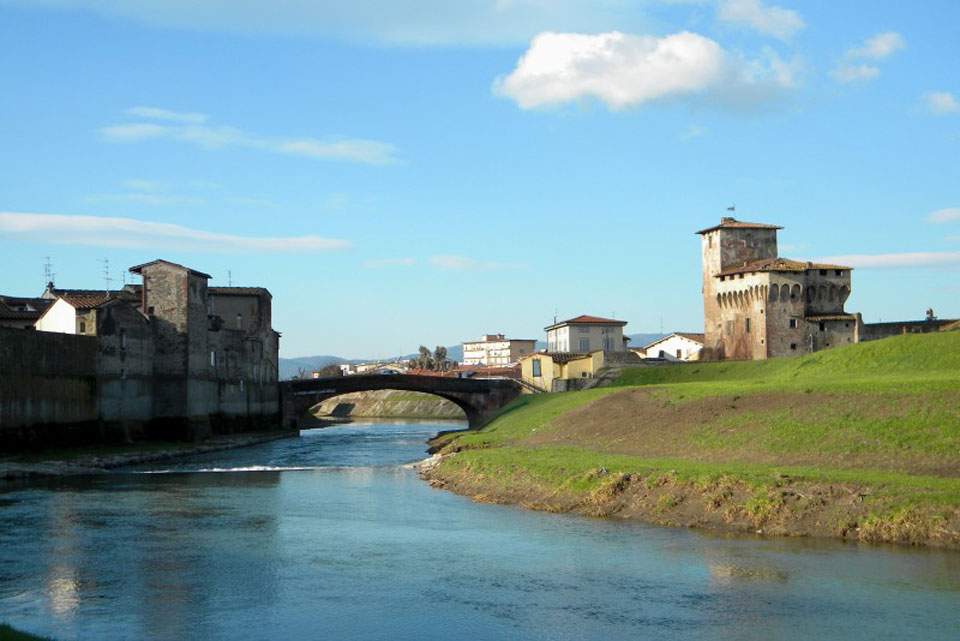Between Prato and Florence lies a marshy and heavily industrialised landscape, crisscrossed by highways and heavily channelled waterways. In the Middle Ages, at Campi Bisenzio, it was the scene for a famous brawl.

The flat and heavily industrialised area of Campi Bisenzio does not invite tourists to spend time at all. Nevertheless, the site does offer one particular intriguing experience somewhat worth a minor short detour.
With remains from the Bronze Age and later the Etruscans and Romans, the small town exhibits a layout witnessing to its history. On 59 BC it was assigned to the city of Florence and populated by veterans of the Roman army, hence the name “Campo Bisenzio”. In the early Middle Ages, it was once again flooded after which the place was virtually inhabited until the 8th century when a document from AD 780 entrusted a group of monks to drain and settle at the place. Later in the 9th century, the church of San Donnino is attested and in AD 861 the church of San Cresci. The main church, Pieve di Santo Stefano a Campi, dates to AD 936. At the end of the 10th century, the Castle of Campi was enfeoffed by the Ottonians to the Mazzinghi. This family fortified Campi and constructed a castle on the Rocca, presently known as the Rocca Strozzi. Located across the river, and outside the fortified town, it was in itself walled. The main economy in the Middle Ages was based on the textile and especially the fulling industry along the river Bisenzio.
Historical sources indicate that the Castle of Campi was the historical location for the famous dinner, which is said to have sparked the feud between the Guelfs and the Ghibellines. The story is that Messer Mazzingo Tegrimi de ‘Mazzinghi held a dinner party to celebrate his knighthood. As guests, he invited some Florentine aristocrats, among whom were Buondelmonte and Oddo Arrighi. When a brawl started between them, it turned into a food fight, which ended badly with Buondelmonte stabbing Oddo in the arm. After a series of negotiations peace was struck pending on the marriage between Buondelmonte and a niece of Oddo’s. Unfortunately, Madonna Gualdrada, the wife of Forese Donati, taunted Buondelmonte. She wanted him for her son-in-law. At the wedding, the bride-to-be and the guests were kept waiting, while the young man was seen wooing his beloved. This led the offended party to a radical course, voiced by Mosca de’ Lamberti with the words: “Capo à cosa fatta”, meaning: what is done is done. The following Sunday when the young man was riding to church, he was, accordingly, stabbed to death in front of the Torre degli Amidei at the foot of Ponte Vecchio in Florence. Later, Dante condemned Mosca de’ Lamberti to hell for fostering strife in the community.

The story is famously told in Dante’s Divine Comedy as well as in earlier chronicles.
Out of this feud grew further hostilities, which soon turned into the full-blown civil war between the Guelfs – followers of the Pope – and the Ghibellines, the imperial party. Later, the division resulted in cities and city-states aligning with the different factions. Thus, in 1260 the Republic of Florence (Guelf) and the Republic of Siena (Ghibelline) faced off at the battle of Montaperti. After the defeat of the Guelphs, the houses of the Ghibellines In Florence and neighbouring towns were destroyed. Among these, the first castle in Campi Bisenzio. Thus, the present Rocca Strozzi is mainly from the later 13th century. However, the tower on the small castle is from the time of the famous dinner. Today, it functions as a cultural centre, while the farm buildings are used for conservation purposes. The town is still walled and presents an excellent example of the proot-industrial towns, which grew up in the neighbourhood of the larger cities in the valley of the Arno.
The Rocca Strozzi is currently (2018) under restoration.

